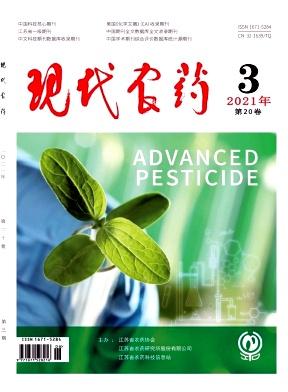Nanofertilizers: Types, Delivery and Advantages in Agricultural Sustainability
引用次数: 7
Abstract
In an alarming tale of agricultural excess, the relentless overuse of chemical fertilizers in modern farming methods have wreaked havoc on the once-fertile soil, mercilessly depleting its vital nutrients while inflicting irreparable harm on the delicate balance of the surrounding ecosystem. The excessive use of such fertilizers leaves residue on agricultural products, pollutes the environment, upsets agrarian ecosystems, and lowers soil quality. Furthermore, a significant proportion of the nutrient content, including nitrogen, phosphorus, and potassium, is lost from the soil (50–70%) before being utilized. Nanofertilizers, on the other hand, use nanoparticles to control the release of nutrients, making them more efficient and cost-effective than traditional fertilizers. Nanofertilizers comprise one or more plant nutrients within nanoparticles where at least 50% of the particles are smaller than 100 nanometers. Carbon nanotubes, graphene, and quantum dots are some examples of the types of nanomaterials used in the production of nanofertilizers. Nanofertilizers are a new generation of fertilizers that utilize advanced nanotechnology to provide an efficient and sustainable method of fertilizing crops. They are designed to deliver plant nutrients in a controlled manner, ensuring that the nutrients are gradually released over an extended period, thus providing a steady supply of essential elements to the plants. The controlled-release system is more efficient than traditional fertilizers, as it reduces the need for frequent application and the amount of fertilizer. These nanomaterials have a high surface area-to-volume ratio, making them ideal for holding and releasing nutrients. Naturally occurring nanoparticles are found in various sources, including volcanic ash, ocean, and biological matter such as viruses and dust. However, regarding large-scale production, relying solely on naturally occurring nanoparticles may not be sufficient or practical. In agriculture, nanotechnology has been primarily used to increase crop production while minimizing losses and activating plant defense mechanisms against pests, insects, and other environmental challenges. Furthermore, nanofertilizers can reduce runoff and nutrient leaching into the environment, improving environmental sustainability. They can also improve fertilizer use efficiency, leading to higher crop yields and reducing the overall cost of fertilizer application. Nanofertilizers are especially beneficial in areas where traditional fertilizers are inefficient or ineffective. Nanofertilizers can provide a more efficient and cost-effective way to fertilize crops while reducing the environmental impact of fertilizer application. They are the product of promising new technology that can help to meet the increasing demand for food and improve agricultural sustainability. Currently, nanofertilizers face limitations, including higher costs of production and potential environmental and safety concerns due to the use of nanomaterials, while further research is needed to fully understand their long-term effects on soil health, crop growth, and the environment.纳米肥料:类型、输送和在农业可持续发展中的优势
在一个令人担忧的农业过度发展的故事中,现代农业方法中无情地过度使用化肥,对曾经肥沃的土壤造成了严重破坏,无情地耗尽了土壤的重要养分,同时对周围生态系统的微妙平衡造成了无法弥补的伤害。这些肥料的过量使用在农产品上留下了残留物,污染了环境,破坏了农业生态系统,降低了土壤质量。此外,很大一部分养分含量,包括氮、磷和钾,在被利用之前就从土壤中流失了(50-70%)。另一方面,纳米肥料使用纳米颗粒来控制养分的释放,使其比传统肥料更有效和更具成本效益。纳米肥料在纳米颗粒中包含一种或多种植物养分,其中至少50%的颗粒小于100纳米。碳纳米管、石墨烯和量子点是用于生产纳米肥料的纳米材料的一些例子。纳米肥料是利用先进的纳米技术为农作物提供高效、可持续施肥的新一代肥料。它们的设计是为了以可控的方式输送植物营养,确保营养物质在较长时间内逐渐释放,从而为植物提供稳定的必需元素供应。控释系统比传统肥料更有效,因为它减少了频繁施用的需要和肥料的数量。这些纳米材料具有很高的表面积体积比,使其成为储存和释放营养物质的理想材料。自然产生的纳米粒子存在于各种来源,包括火山灰、海洋和生物物质,如病毒和灰尘。然而,就大规模生产而言,仅仅依靠天然存在的纳米颗粒可能是不够的或不切实际的。在农业领域,纳米技术主要用于增加作物产量,同时最大限度地减少损失,激活植物防御害虫、昆虫和其他环境挑战的机制。此外,纳米肥料可以减少径流和养分淋失到环境中,提高环境的可持续性。它们还可以提高肥料的使用效率,从而提高作物产量,降低肥料施用的总体成本。在传统肥料效率低下或无效的地区,纳米肥料尤其有益。纳米肥料可以提供一种更有效和更具成本效益的方式来施肥作物,同时减少施肥对环境的影响。它们是有前途的新技术的产物,可以帮助满足日益增长的粮食需求并提高农业的可持续性。目前,纳米肥料面临着局限性,包括生产成本较高以及由于使用纳米材料而产生的潜在环境和安全问题,而需要进一步研究以充分了解其对土壤健康、作物生长和环境的长期影响。
本文章由计算机程序翻译,如有差异,请以英文原文为准。
求助全文
约1分钟内获得全文
求助全文

 求助内容:
求助内容: 应助结果提醒方式:
应助结果提醒方式:


